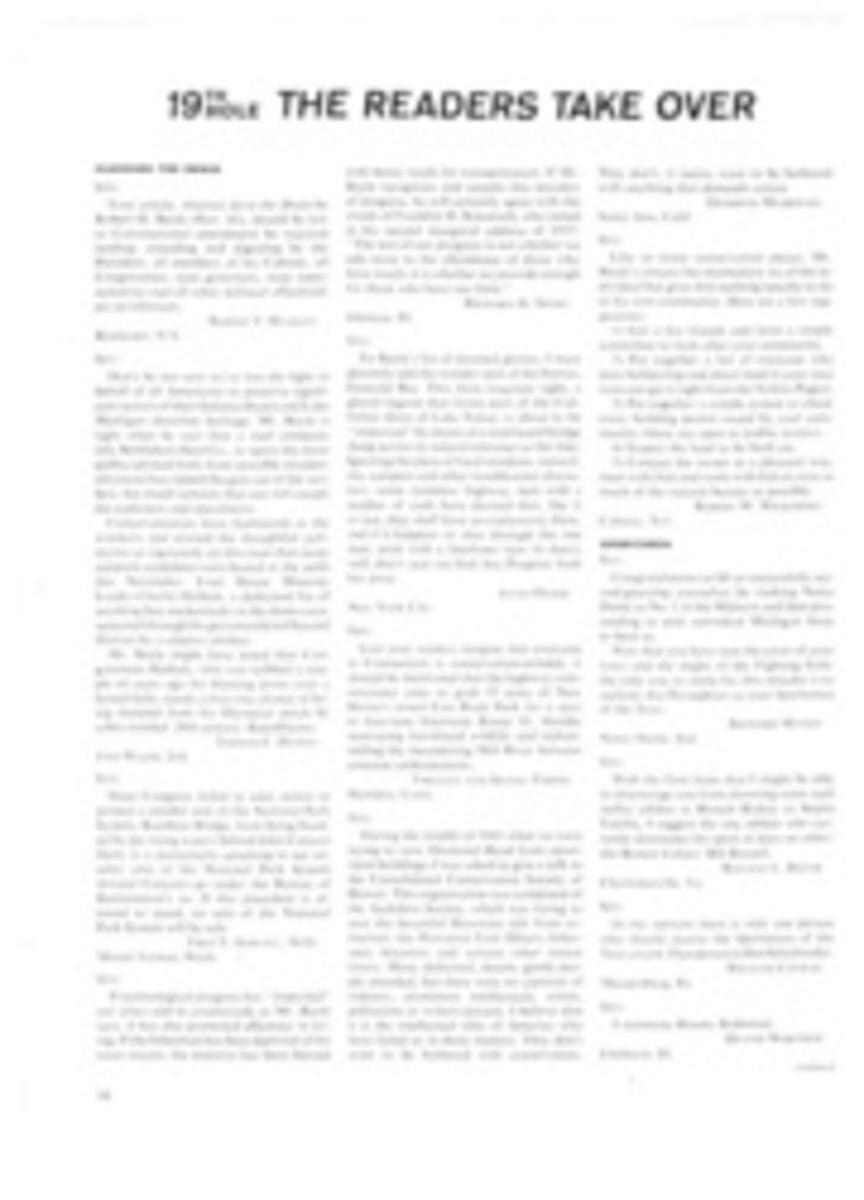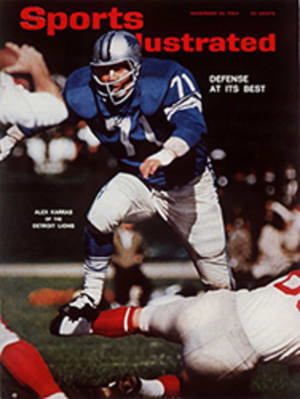
Year-round sailors go to Joe Harris of San Francisco for their winter gear
The true-hearted sailor knows no season, least of all in San Francisco Bay. At any season the bay is likely to be gusty—locally known as dusty—especially in the lee of its islands, peninsulas and other postcard landmarks, and brisk-weather sailing gear comes in handy. A place to buy it is the Joe Harris company, "specialists in yachting togs and accessories." It has been outfitting San Franciscans for the sea (and more recently the lakes and rivers) since 1885. What some people virtually consider uniforms for Bay Area sailing are warm, well-tailored navy-blue woolens from Joe Harris. The company still does 65% of its business in uniforms for the merchant marine, Navy and Coast Guard and in supplies for the "slop chest" (like an Army PX or Navy ship's service), which every merchant vessel is required to have. It tells woolen mills just what it will buy and then tells manufacturers how to make garments to Joe Harris specifications.
Joe Harris is popular with women sailors. This might startle the original Joe Harris, who died in 1933 at the age of 57, after becoming almost legendary. The very words "yachting togs" on his catalog probably would have embarrassed Joe, who started as a peddler. His father was a cobbler who mended seagoing boots. At 15, Joe was roaming the docks and wharves from ship to ship, looking for boots and shoes to shine—and was smart enough to tote along a suitcaseful of shoestrings, pencils, sailing caps, buttons and thread. He finally set up shop in a little corner of a waterfront crimphouse, where the 1906 fire caught him. Improvising a corrugated tin shack on Drumm Street, he went right on selling dungarees, pilot coats and rubber boots. The new Joe Harris store opened on the Embarcadero later in 1906, moving just a salty whisker away in 1930 as business got bigger and Joe took in his three brothers as partners.
The Harris brothers kept a generation of seamen afloat, credit-worthy if they were seaworthy or were trying to be. Joe Harris collected an oceanful of friends and a portful of drinking companions—as well as drawers full of unpaid bills and a basement full of "stuff from all over the world" being stored Until the Next Trip.
"The Panama Canal was hard on Joe Harris," says Biff Harris, Joe's son who now runs the business with his brother, Perry, and their cousin Mervyn. "Before that, nearly everybody sailing out of San Francisco wound up back here eventually. If a guy didn't pay, the rest of the crew would get on him and say, 'You go pay Joe Harris.' It was illegal to attach a seaman's wages, and it still is. But now most of them have Bankamericards."
In 1962, when the Skyway pushed the Joe Harris store clear off the Embarcadero and into its roomy, modern location at Second Street and Howard, it was a wrench for northern California yachtsmen. They had grown accustomed to the place. The store's sporting look had begun with the big, early California yachts bearing owner names like John D. Spreckels, Templeton Crocker and Hiram Johnson. Their crews were merchant mariners, so naturally they went to Joe Harris; so did the crews of eastern yachts that put into port.
These days anything that's over eight feet long and floats has to be registered in California. In 1963 there were more than 225,000 pleasure boats. Bay Area counties alone have some 50,000, with 50 clubs in the area's Pacific Inter-Club Boat Association (which had seven clubs in 1932). A lot of their crews and skippers rely on Joe Harris, too.
Old Joe Harris "never sailed on nothing," except as a passenger. But he had a Liberty Ship named for him in 1944. The wheelhouse and bridge from his old Embarcadero store look grand—if wistful—in the new place. And his Chart Room remains—a memento of waterfront camaraderie (no wardroom-type coffee, just bourbon and Scotch), where prosperous amateur yachtsmen are flattered to rub elbows with the president of the Sailors Union of the Pacific.
From San Francisco to Maine you can find Joe Harris functional sailing classics. The company does a large mail-order business. The men's In-and-Outer shirt (see illustration) comes in navy, 16-ounce melton, button front and cuffs, zip breast pockets ($24.50; slacks cost $22.50). The women's shirt, flannel only, is a copy of a chief petty officer's shirt, with button breast pockets, cuffs and front ($22.50); slit sides are for wearing in and out. Women's navy sailing pants in melton or flannel are designed with a fly front or, in flannel only, with traditional nautical front buttoning ($22.50).
Newer for after-sailing than the blazer ($39.50), and also more rugged, is a men's fingertip jacket of 16-ounce navy melton fully lined in matching rayon, with zip front and zip pockets ($45).
For heavy weather there is Sportcaster's fingertip coat of water-repellent navy poplin or nylon, with Jen-cel-lite insulation—50% wool, 50% nylon—($35) and a detachable hood ($6) or McGregor's Flote Coat (same price, same length, same color but lighter weight); a nylon shell with buoyant sponge-plastic insulation.
Foul-weather gear comes from Canor Plarex of Norway: an almost gossamer shield of well-cut vinyl-coated Egyptian cotton in high visibility yellow with all seams first sewed, then heat-welded, fastened with a combination of drawstrings, snaps, buttons and zippers (two-piece; women's $23.95, men's $24.95).
For gentler weather, afloat or ashore, Joe Harris has a charming short-sleeved shirt, patterned with charts of the Grenadine Islands, blue on pale blue or blue on white ($4.50, patterned for men and women). Favorites with the yachting set are the combed cotton T shirts in navy with white stripes for men ($3.95) and navy and white or red and white for women, at the same price. These are worn with faded-blue-denim slacks (men's $5.95 and $6.95). Similar fly-front faded denims are designed for women by Fleischman ($8.95) and are also available in navy and white duck. Women's knee pants are $7.95.
Joe Harris carries the classic water-repellent and windproof nylon sailing parkas. Men's ($14.95) come in red or navy. Women's are $11.95 and are royal blue or yellow as well as red and navy. Both parkas feature hoods and drawstring waists for snug fit. Women's parkas are the pullover style, while men's have a zip front.
Safe footing afloat or ashore is assured by a line of Sperry shoes with antislip soles. These soles are attached to a variety of styles, including a canvas oxford in white, navy or red ($9.95, men's or women's); and elk moccasins ($18.95, men's or women's).
Joe Harris also sells a rigging knife with steel blades and a locking marlin spike ($7.95), and a knife kit with plier tool combining a wrench and screwdriver added ($13.95). The company will provide almost anything on special order. Right now the Joe Harris company is making up a burgee for a yacht club on Kwajalein.
ILLUSTRATION

